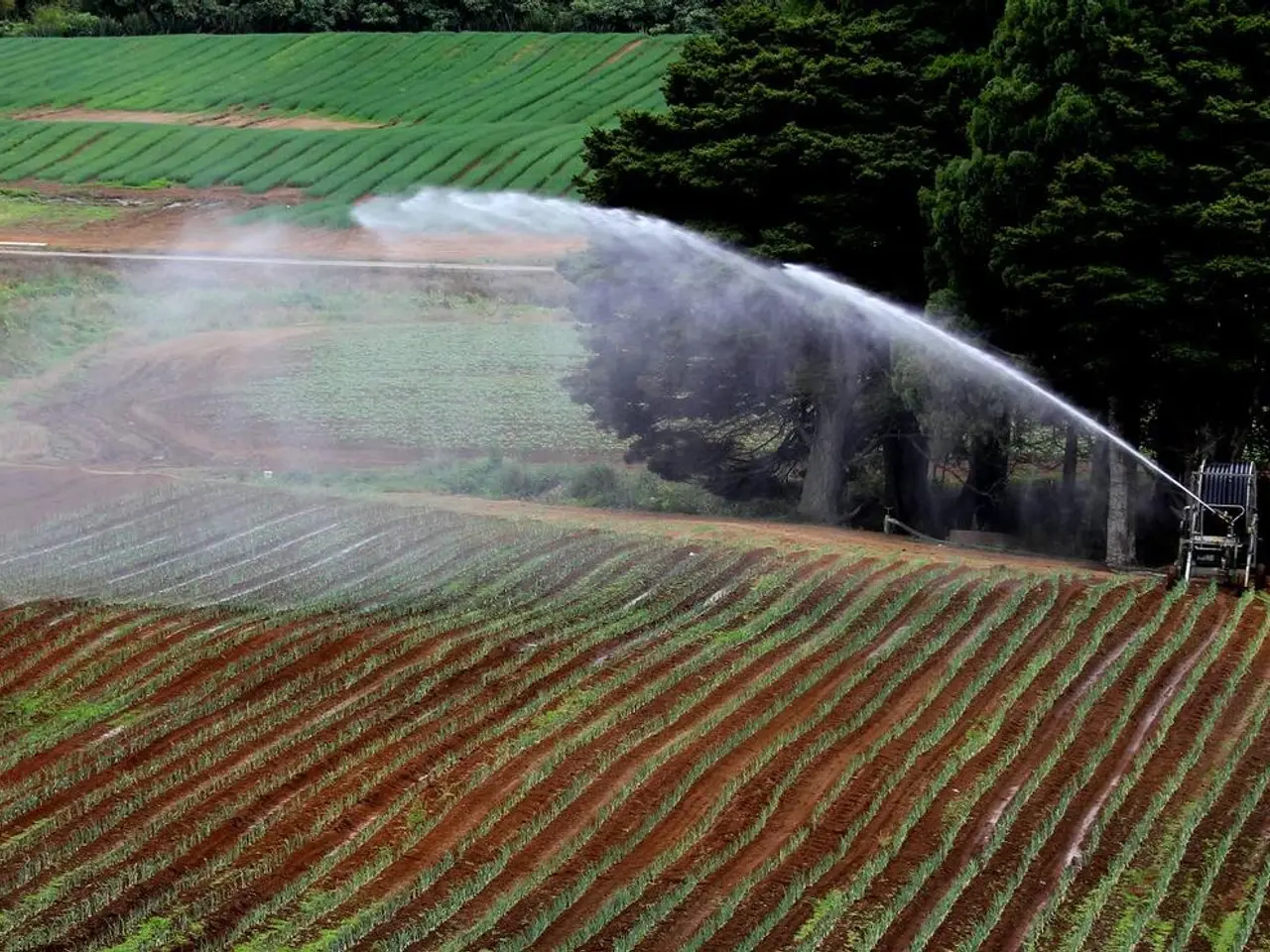Sustainable Agricultural Methods in Permaculture: Boosting Efficiency and Reducing Environmental Impact
In the realm of modern agriculture, efficiency and sustainability are the new norms. From energy-saving techniques in precision farming to eco-friendly cultivation methods, farmers worldwide are embracing innovative practices to reduce their carbon footprint and lower costs.
One such smart move is the use of greywater for plants in energy-efficient farming. This practice, along with efficient field equipment use, maintenance, and thoughtful planning for new equipment selection, contributes significantly to energy savings.
Agroforestry, a system that blends trees and shrubs with crops or livestock, is another game-changer. Agroforestry systems create a layered ecosystem that boosts energy efficiency, soil fertility, and fights erosion. They are used in sustainable agriculture, eco-friendly cultivation, and regenerative practices to tackle the growing need for food, shelter, and resources.
Sustainable livestock management aims to create closed-loop systems that maximize resource efficiency and minimize waste. Practices such as rotational grazing and silvopasture improve soil health, biodiversity, and cut down on external inputs. Integrated crop-livestock systems can also create closed-loop systems, utilizing on-farm waste and reducing energy consumption.
Composting is a big help in soil management for energy efficiency. By recycling organic waste, farmers can enrich their soil, reducing the need for synthetic fertilizers and lowering energy use.
Rainwater harvesting is another essential tool in energy-efficient farming. Collecting and storing rainwater for irrigation purposes can significantly reduce energy consumption associated with pumping groundwater.
Innovations in technology also play a crucial role in energy-saving farming. Solar panels are a top choice for farmers to make their own electricity and lower their energy costs. Wind power is another big AgTech innovation, generating up to $5,000 a year for each turbine.
Precision farming, smart farming, and data-driven agriculture lead the green movement in permaculture. Techniques such as Variable Rate Input (VRI) application, the use of advanced sensors, drones, and IoT devices, robotics and autonomous machinery, data-driven decision making through AI and machine learning, remote sensing and satellite imagery integration, and fertigation (combined fertilization and irrigation) optimize input use spatially and temporally, decreasing fuel, water pumping, and chemical production energy demands while maintaining or increasing productivity.
Supportive policies and incentives, such as subsidies for renewable energy, grants for water conservation, and tax breaks for sustainable farming, can help overcome financial hurdles and speed up the move to energy-efficient farming. The USDA's Natural Resource Conservation Service (NRCS) offers help and information for farmers and ranchers who want to use new practices and tools on their land. The USDA Beginning Farmer Development Program offers grants to organizations for education, mentoring, and technical assistance for new farmers.
The Sustainable Agriculture Research and Education (SARE) program offers funding for conservation tillage, crop rotation, grazing management, soil health, local food systems, and innovative practices. Research shows that liquid fuel use in field operations in field-crop based agriculture is huge. The 2018 farm bill helps family farmers and ranchers improve soil health and fight climate change.
By adopting these energy-saving techniques, farmers can cut energy use and lower costs, making farming a more sustainable and profitable venture. A prime example is La Ferme du Bec Hellouin in France, which produces ten times more than big organic farms, all while using eco-friendly cultivation techniques. Building with natural materials and using the sun's power is another smart move in energy-efficient farming.
In conclusion, the future of agriculture lies in energy-efficient practices. From agroforestry and composting to precision farming and renewable energy, farmers are finding innovative ways to reduce their carbon footprint and lower costs. With supportive policies and incentives, the move towards a more sustainable agriculture is not just possible, but inevitable.
- Agroforestry, a blend of trees, shrubs, crops, or livestock, boosts energy efficiency, soil fertility, and fights erosion, playing a significant role in regenerative practices and sustainable agriculture.
- Composting organic waste can enrich soil, reduce the need for synthetic fertilizers, and lower energy use, making it a beneficial practice for energy-efficient farming.
- Rainwater harvesting can significantly reduce energy consumption associated with pumping groundwater for irrigation purposes, making it an essential tool in energy-efficient farming.
- Solar panels and wind power are AgTech innovations that help farmers make their own electricity and lower their energy costs, contributing to the green movement in precision, smart, and data-driven agriculture.
- Innovations in technology, such as Variable Rate Input (VRI) application, advanced sensors, drones, IoT devices, robotics and autonomous machinery, data-driven decision making through AI and machine learning, remote sensing, satellite imagery integration, and fertigation, optimize input use to decrease energy demands while maintaining productivity.
- Supportive policies and incentives, including subsidies for renewable energy, grants for water conservation, tax breaks for sustainable farming, and funding from programs like the USDA's Natural Resource Conservation Service and Sustainable Agriculture Research and Education (SARE), can help overcome financial hurdles and speed up the transition to energy-efficient farming.
- Education and self-development opportunities, like those offered by the USDA Beginning Farmer Development Program, provide grants for new farmers to learn and implement sustainable agricultural practices.
- By adopting energy-saving techniques, such as those mentioned above, farmers can cut energy use, lower costs, and make farming a more sustainable and profitable venture, creating a more eco-friendly future for our communities and the environment.




